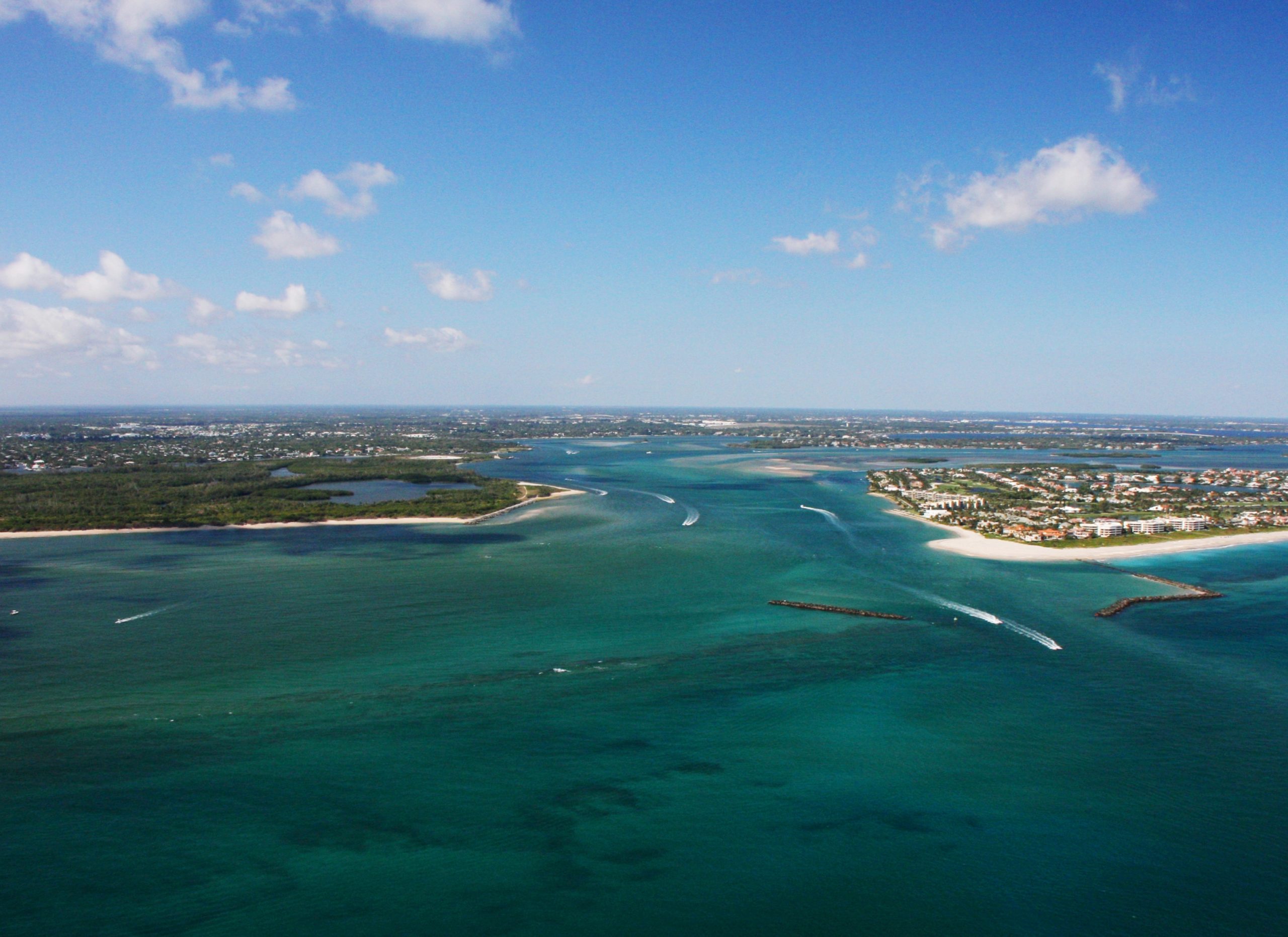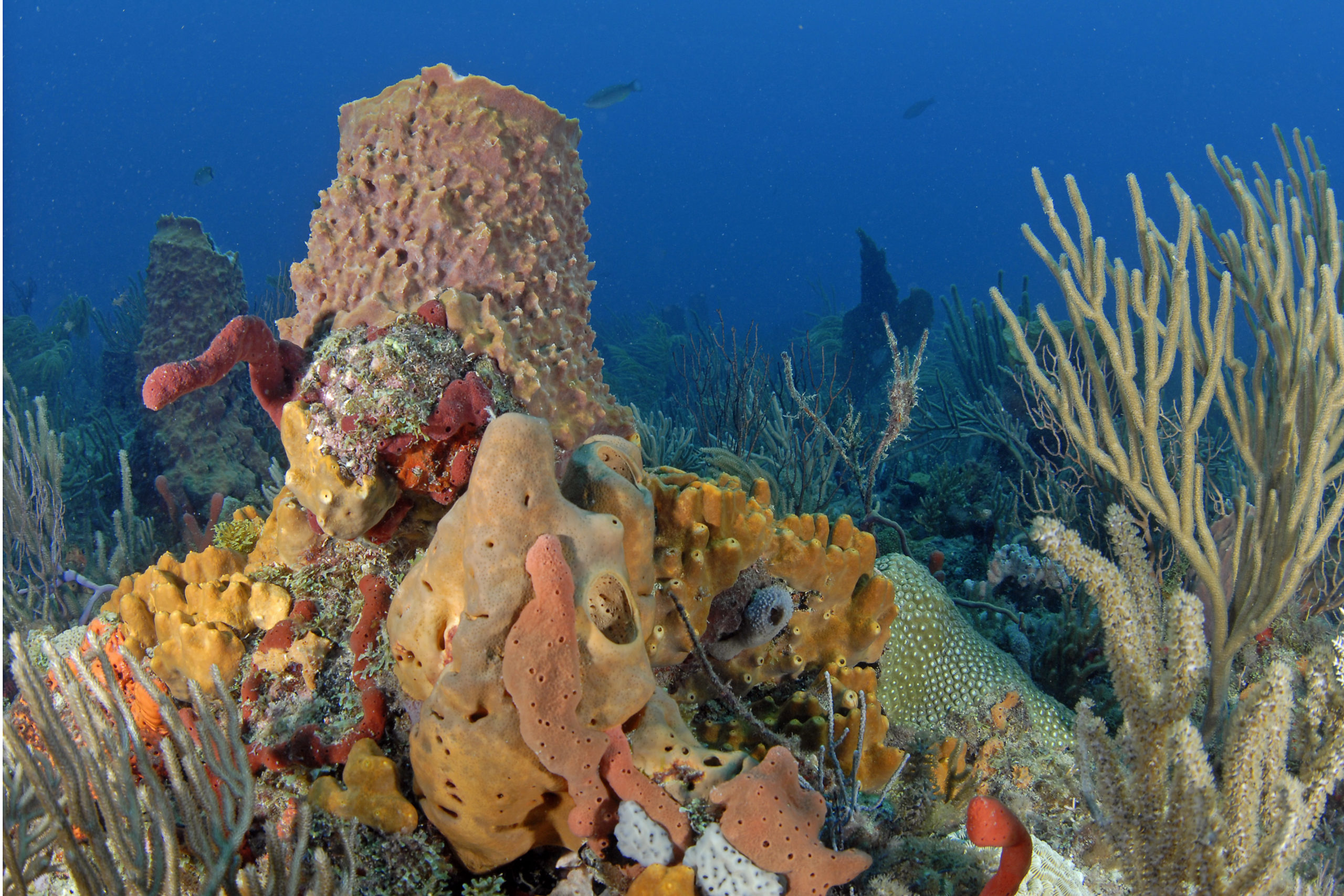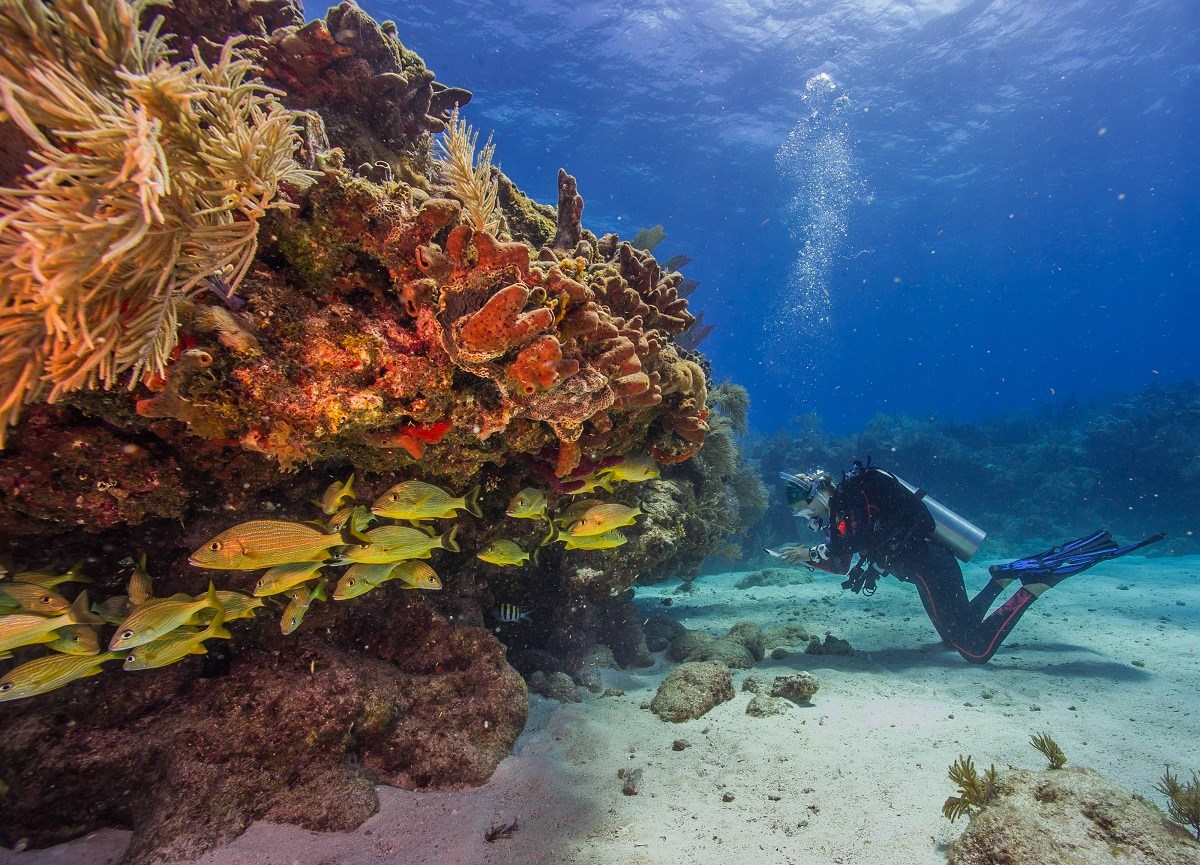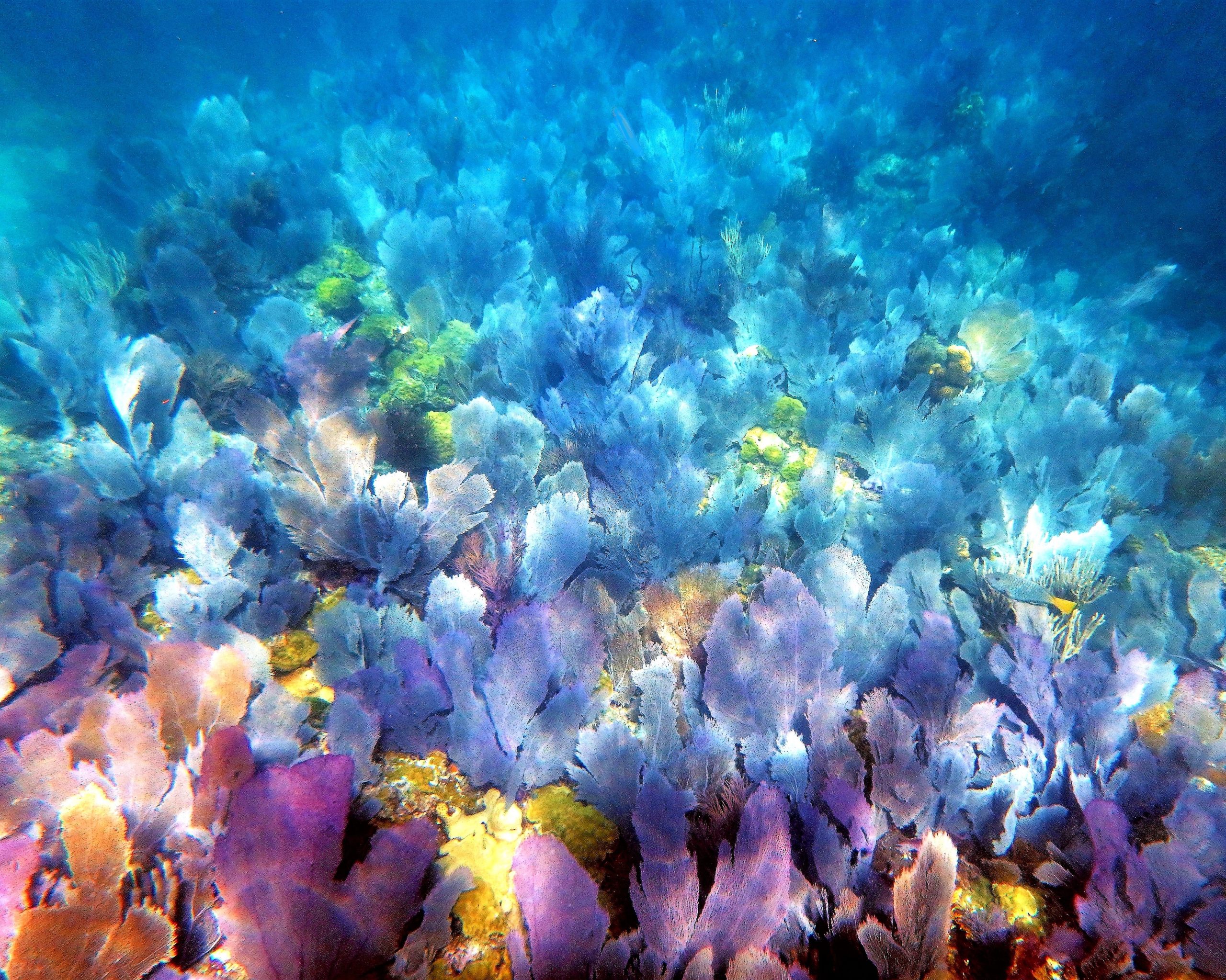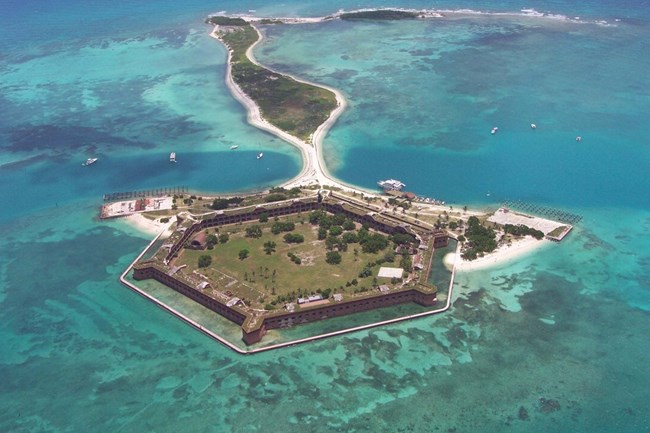News & Updates
Stony Coral Tissue Loss Disease found at Dry Tortugas National Park
Written by: National Park Service, U.S. Department of the Interior
Coral Response Team begins treatment immediately

KEY WEST, Fla. – Stony Coral Tissue Loss Disease—an infectious, water-borne disease that impacts hard coral species and damages entire reefs—has been found on corals in Dry Tortugas National Park. The park’s Coral Response Team observed it on May 29 while conducting a routine disease survey.
“Until now, Dry Tortugas National Park was the only remaining section of Florida’s Coral Reef to not show signs of the disease,” said Pedro Ramos, superintendent of Everglades and Dry Tortugas national parks. “Finding it early is significant, because without treatment, the disease has the potential to destroy the park’s underwater gardens, as affected corals have a nearly 100% mortality rate.”
First reported near Miami in 2014, the disease appears as white patches where the disease has consumed the live coral tissue, exposing the bright white coral skeleton and removing the brilliant colors that the reefs are known for. Now found throughout Florida’s Coral Reef and the Caribbean, the disease outbreak is unprecedented in its broad geographic range, extended duration, high rates of mortality and number of coral species affected. While the cause of the disease is yet unknown, bacteria likely plays a role, since antibiotic treatments have proven effective.
The Dry Tortugas National Park Coral Response Team observed the telltale white lesions on 11 coral colonies of three highly susceptible coral species Meandrina meandrites (Maze Coral), Meandrina jacksoni (White Maze Coral) and Dichocoenia stokesii (Elliptical Star Coral). These are typical ”canary” species that are often the first corals within a reef community to show symptoms of Stony Coral Tissue Loss Disease during an outbreak. A survey on May 6 showed no evidence of the disease at this location. Several highly susceptible corals in the area still appear to be healthy and only 3% of the susceptible colonies in the area have been impacted at this time.
Following an established response plan, the team immediately applied the most effective treatment available, an antibiotic paste, to the infected corals. Currently, the disease appears to be concentrated in one area near the southeastern boundary of the park, approximately 2.5 miles east from Garden Key, where Fort Jefferson is located.
In anticipation of Stony Coral Tissue Loss Disease reaching the Dry Tortugas corals, the park has regularly monitored 40 sites since September 2020. With matching funds from the state of Florida and park concessions, the park hired six biologists and established a Coral Response Team to focus exclusively on coral monitoring and disease response.
Now that the disease has been found in the park, the Coral Response Team, with support from partners, will increase the number of reconnaissance surveys to confirm the distribution of the outbreak within the park. Simultaneously, the team will treat infected corals at sites where Stony Coral Tissue Loss Disease is found. The application of the antibiotic amoxycillin has been shown to slow the spread of the disease and increase coral survival. The team will focus their treatment efforts on high priority corals including threatened species, large reproductively-active corals, and those in areas with high coral cover and biodiversity.
Since the disease has spread through the entirety of Florida’s Coral Reef, the disease response has been a collaborative multi-agency effort. The National Park Service continues to work closely with the Florida Department of Environmental Protection, the Florida Fish and Wildlife Conservation Commission, and the National Oceanic and Atmospheric Administration along with other government agencies, academic institutions, and conservation organizations.
“We are fortunate to be part of such a strong partnership working collaboratively to protect Florida’s Coral Reef,” Ramos said. “Not only do our national parks provide unparalleled recreational opportunities, they also serve as living laboratories to conduct science.”
Over the past two years, the park and park partners have also taken preventative measures by collecting healthy corals as part of the multi-agency Coral Rescue Project. The park’s rescued corals were placed in land-based aquaria to prevent them from becoming infected, to preserve genetic diversity and to serve as breeding stock for future restoration activities.
Even when using the best available treatments, previous efforts to limit the disease spread have not always been successful, and many corals have been lost. Surveillance and intervention may be the best approach to limiting Stony Coral Tissue Loss Disease’s impacts while continuing to inform researchers about the disease and its effect on corals.
While the situation is urgent, everyone can still do their part to save this important ecosystem. Corals are resilient when given the chance. People can help our corals when recreating on or around the water:
- Wear reef-safe sunscreen or protective clothing in the water.
- Dispose of trash properly to reduce marine debris.
- Avoid touching, standing on or kicking corals, especially when snorkeling or diving.
- Follow local fishing, diving and anchoring rules.
Healthy coral reefs are among the most biologically diverse, culturally significant and economically valuable ecosystems on Earth. Coral reefs safeguard against extreme weather, shoreline erosion and coastal flooding.
Florida’s Coral Reef provides more than $355 million/year in flood protection benefits and protects nearly $320 million in annual economic activity. Florida’s Coral Reef stretches for over 350 miles and borders five counties that are home to over seven million people.
Located 70 miles west of Key West, Dry Tortugas National Park attracts visitors for both its cultural and natural features, including the colorful corals and the abundant marine life that depend on the reef. Snorkelers and divers may enjoy the underwater scenery, but all visitors are able to view some of the corals and tropical fish from the moat wall that surrounds the iconic Fort Jefferson.
Visit the park’s website for more information on Stony Coral Tissue Loss Disease.
Photos available on the park’s Flickr album.
Read Original Article
